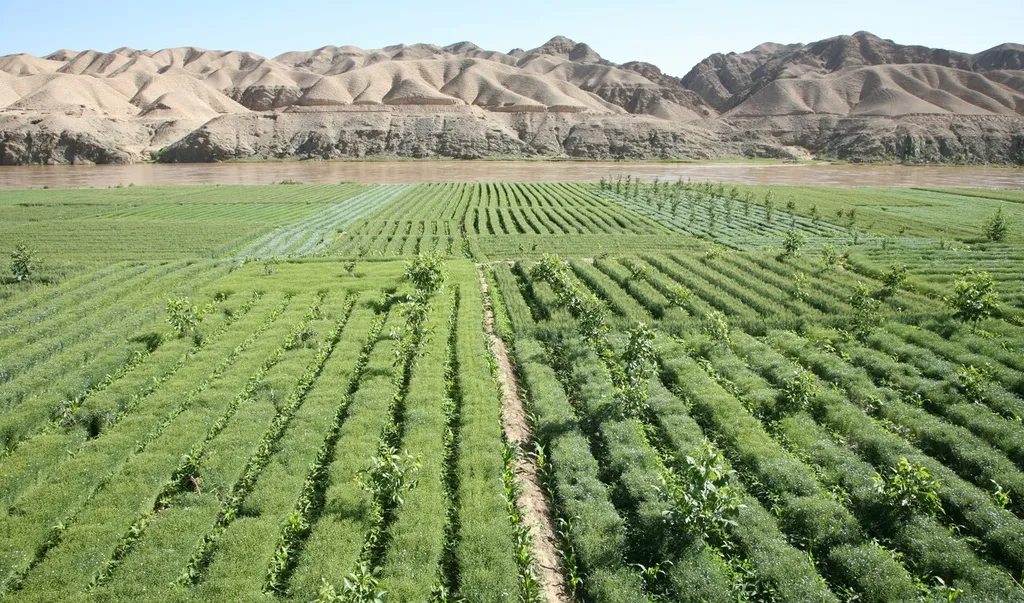In the ever-evolving world of agriculture, a groundbreaking study has shed light on the intricate dance of root exudates and interspecific interactions, offering promising avenues for enhancing crop quality and yield. The research, published in *Industrial Crops and Products*, reveals that intercropping Atractylodes lancea (A. lancea) with maize can significantly boost the volatile oil content and yield of A. lancea, a valuable medicinal plant.
The study, led by Zheng Peng from the State Key Laboratory for Quality Ensurance and Sustainable Use of Dao-di Herbs and the Key Laboratory of Biology and Cultivation of Herb Medicine, delved into the rhizosphere interactions between A. lancea and maize. Over a two-year field experiment, the team explored various intercropping methods, including A. lancea monoculture, A. lancea and maize intercropping without separation, with a permeable nylon root barrier, and with an impermeable plastic root barrier.
The results were striking. Intercropping maize with A. lancea increased the rhizome yield by an impressive 52.2%. Moreover, the total content of four sesquiterpene volatile oils doubled, with β-eudesmol and atractylodin contents increasing by 1.3 times and 8.8 times, respectively. These volatile oils are crucial for the medicinal properties of A. lancea, making this finding particularly significant for the agricultural and pharmaceutical sectors.
The study also identified specific rhizosphere signals—formononetin, isoliquiritigenin, and calycosin—that significantly enhanced the volatile oil content in A. lancea. “These compounds act as chemical messengers, triggering a cascade of genetic responses that boost the production of valuable secondary metabolites,” explained Peng. The research further revealed that intercropping significantly increased the expression of key sesquiterpenoid synthesis genes in A. lancea, including HMGS, HMGR, DXS, DXR, and FPS.
The implications of this research are far-reaching. By understanding and harnessing the power of interspecific rhizosphere interactions, farmers and agritech companies can develop innovative intercropping strategies to enhance crop quality and yield. This approach not only promises to improve the productivity of medicinal plants but also offers a sustainable and eco-friendly method to boost agricultural output.
As the global demand for high-quality crops continues to rise, this study provides a blueprint for leveraging natural plant interactions to meet these challenges. “Our findings open new avenues for exploring the mechanisms by which interspecific rhizosphere interactions promote crop quality,” Peng noted. This research could pave the way for future developments in precision agriculture, where tailored intercropping systems are designed to maximize the benefits of root exudates and rhizosphere interactions.
In an era where sustainability and efficiency are paramount, this study offers a glimpse into the future of agriculture, where the intricate dance of roots beneath the soil surface holds the key to unlocking the full potential of our crops. As the agricultural sector continues to evolve, the insights gained from this research will undoubtedly play a crucial role in shaping the practices and technologies of tomorrow.

